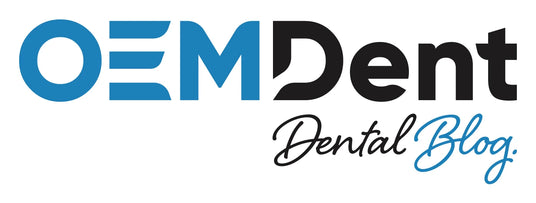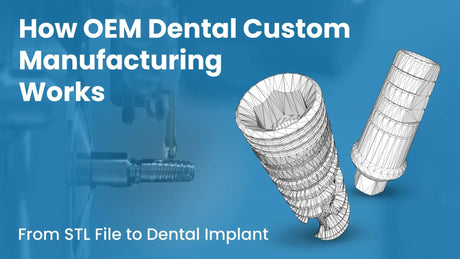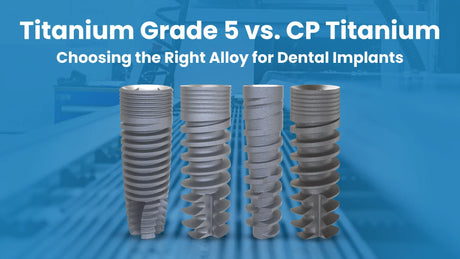

10 Critical Uses of Implant Analogs in Dental Implantology
In this OEMDent.com article, we will explore the versatile and essential role of Implant Analogs in dental research and implantology. An implant analog is a precise replica of the dental implant, often used in the creation of dental prosthetics, serving as a key component in various stages of treatment planning and restorative procedures.
These analogs are crafted to match the exact dimensions and properties of the corresponding dental implant, ensuring compatibility and accurate simulation during laboratory procedures. Their importance in the field of dental research and clinical practice cannot be overstated, as they provide a reliable platform for testing, planning, and ensuring the success of implant-based restorations.
Creating Precise Dental Models
Implant analogs, such as the Straumann Bone Level® Compatible analog, are pivotal in creating accurate dental models. These models are used to replicate the patient's oral environment, ensuring that the final prosthetics fit perfectly within the patient's mouth. By simulating the exact placement and orientation of the implant, dental professionals can predict and rectify potential issues before the actual implantation, leading to better patient outcomes¹.
Training and Educational Purposes
Implant analogs, like the BioHorizons® Internal Hex Compatible analog, serve as invaluable tools in dental education. They allow students and professionals to practice implant placement and prosthetic procedures in a controlled environment, thereby enhancing their skills and reducing the margin of error in real-world scenarios².
Digital Workflow Integration
In the era of digital dentistry, implant analogs, such as the NobelActive®️ Conical Compatible analog, are crucial for integrating digital workflows with physical models. They facilitate the seamless transition from digital design to physical fabrication, ensuring that the final implant-supported restorations are both accurate and functional³.
Material Testing and Research
Researchers frequently use implant analogs, like the Astra® Compatible analog, to test new materials for implant prosthetics. These analogs provide a consistent and standardized platform to assess the performance of new materials, helping to advance the field of implantology and improve patient care⁴.
Quality Control in Manufacturing
The Zimmer® Internal Hex Compatible analog plays a significant role in quality control during the manufacturing of dental implants. Manufacturers use these analogs to ensure that every implant meets the stringent dimensional and material standards required for clinical success, thereby maintaining high levels of product reliability⁵.
Custom Prosthetic Fabrication
Implant analogs like the MEGAGEN® Anyridge® Compatible analog are essential in the custom fabrication of prosthetics. By providing a physical representation of the implant, these analogs allow dental technicians to create highly personalized restorations that cater to the unique anatomical features of each patient⁶.
Laboratory Simulation of Clinical Procedures
In laboratory settings, implant analogs such as the Osstem® TS Hexagon analog are used to simulate clinical procedures. This practice enables technicians to anticipate and resolve potential complications before the patient undergoes surgery, thus improving the overall success rate of dental implants⁷.
Prototyping and Innovation
The Straumann BLX® Compatible analog is often used in prototyping new implant designs. By testing these prototypes in a controlled environment, manufacturers can refine their designs, ensuring that the final product is both innovative and reliable, ultimately leading to better patient care⁸.
Evaluating Biomechanical Stability
Nobel Replace (Tri-Lobe)® Compatible analogs are used to assess the biomechanical stability of dental implants. By replicating the forces and stresses that an implant will endure in the mouth, researchers can ensure that the final product will perform well under real-world conditions⁹.
Patient-Specific Implant Planning
Finally, implant analogs such as the Nobel® Brånemark Compatible analog are crucial in patient-specific implant planning. By creating a customized model of the patient's oral structure, these analogs allow for precise planning and execution of implant placement, leading to better aesthetic and functional outcomes¹⁰.
Conclusion
In this OEMDent.com article, we have explored the multifaceted uses of implant analogs in dental research and implantology. These essential tools not only facilitate accurate treatment planning and prosthetic fabrication but also play a critical role in the ongoing innovation and quality control in the field. As dental technology continues to advance, the role of implant analogs in ensuring successful patient outcomes remains as crucial as ever.
- MDPI: 10-Year Evaluation of the First Root Analogue Implant on Humans, Made Using a CT Scan, CAD/CAM and DMLS
- KAOMI: A Narrative Review of Contemporary Evaluation Methods for Root Analog Implants
- ScienceDirect: The substitution of the implant and abutment for their analogs in mechanical studies: In vitro and in silico analysis
- Wiley: Digital versus Analog Procedures for the Prosthetic Restoration of Single Implants: A Randomized Controlled Trial with 1 Year of Follow-Up
- MDPI: Customized Root-Analogue Implants: A Review on Outcomes from Clinical Trials and Case Reports
- ResearchGate: Digital versus Analog Procedures for the Prosthetic Restoration of Single Implants: A Randomized Controlled Trial with 1 Year of Follow-Up
- ResearchGate: Effect of multiple reuse of commonly used implant analogs on the dimensional accuracy and the marginal gap between analog and abutment -An in vitro study
- ScienceDirect: Design and additive manufacturing of root analogue dental implants: A comprehensive reviewAuthor links open overlay panel
- NIH: Influence of digital implant analog design on the positional trueness of an analog in additively manufactured models: An in-vitro study Nobel Replace (Tri-Lobe) Compatible Analog
- NIH: Effect of multiple reuse of commonly used implant analogs on the changes in the distance between internal threads: An in vitro study

OEMDent.com offers uncompromised quality, cost-effective dental implants & prosthetics compatible with leading implant systems. We go beyond manufacturing, offering OEM & Private Label services to meet your dental needs.






